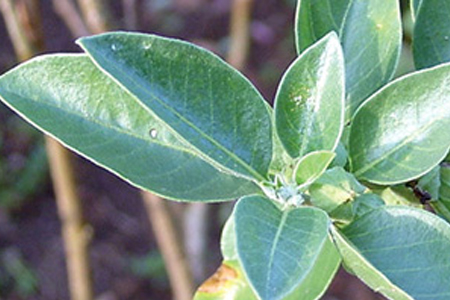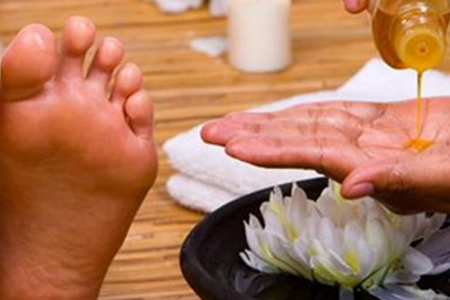Author Archives: Vaidya Jagjit Singh
Top 7 Amazing Health Benefits of Ashwagandha (Withania Somnifera)
- March 11, 2017
- Posted by Vaidya Jagjit Singh
- 0 Comment(s)
Ashwagandha (Withania somnifera) is commonly known as Indian ginseng, poison gooseberry or winter cherry worldwide. It is one of the very famous herbs commonly used in Ayurvedic medicines. Even though the leaves and fruits bear the medicinal properties, it is the root of Ashwagandha which is the treasure house of the medicinal properties.
For centuries together Ashwagandha is used by the people in day to day problems like anxiety, exhaustion, and stress etc. It is the power bank of rich anti oxidants, iron and amino acids. Ashwagandha contains many useful chemicals including steroidal lactones like Withanolides, alkaloids, choline, fatty acids and amino acids etc. Ashwagandha had been a great interest for researchers since a lot many years. More than 300 studies had been published regarding the health benefits of Ashwagandha. Hence it is considered as the nature’s gift to Mankind.
Netra Vasti – Panchakarma Therapy for Treatment of Eye Diseases
- February 9, 2017
- Posted by Vaidya Jagjit Singh
- 0 Comment(s)
Netra Vasti, also known as Akshi Tarpana, is a process of keeping medicated ghee or oil in the eyes for a certain period of time. It is the best purification and rejuvenation process of eye and other sense organs. In healthy individuals it is carried out to protect the eyes from degeneration due to the aging process and to improve the vision in the diseased person.
Sarvanga Abhyanga (Full Body Massage) – Procedure, Benefits & Indications
- February 5, 2017
- Posted by Vaidya Jagjit Singh
- 0 Comment(s)
Sarvanga means whole body and abhyanga means massage. Sarvanga Abhyanga is a process in which massage is done to the whole body with the help of medicated oils and ghrits as a preventive and curative therapy. Warm oils deeply penetrate into the cells and release physical, mental and spiritual toxins, hence sarvanga abhyanga works as detoxifying as well as healing cellular therapy.
Nasya Karma – Panchakarma Therapy for Sinusitis Treatment
- February 2, 2017
- Posted by Vaidya Jagjit Singh
- 0 Comment(s)
Nasya therapy is a process wherein herbal oils and medicated ghrits are administered in the nostrils. Since nose is the gateway to the head, it is believed that this therapy is highly effective in curing a number of diseases related to the head. The therapy cleanses and opens the channels of the head, thereby improving the process of oxygenation which has a direct influence on the functioning of the brain. In this process, the imbalanced doshas are removed through the nasal openings.
Shashtika Shali Pinda Sweda (Navarakizhi) – Procedure, Benefits & Indications
- January 29, 2017
- Posted by Vaidya Jagjit Singh
- 0 Comment(s)
INTRODUCTION
In the term Shashtika Shali Pinda Sweda (Navarakizhi), Shashtika Shali refers to medicated rice, pinda refers to bolus and sweda refers to the sudation performed using bolus of medicated rice.
PROCEDURE
Firstly kwatha or decoction of balamoola is prepared by boiling around 750 grams of it in 12 litres of water. After preparing the kwatha, Shashtik rice should be cooked in about 1.5 litres of balamoola kwatha and 1.5 litres of milk. The rice should be cooked till they become thick and semisolid. After the rice has been cooked, they should be put in a cotton cloth and a potali or bolus should be made of it.
Swedana – Procedure, Benefits & Indications
- January 23, 2017
- Posted by Vaidya Jagjit Singh
- 0 Comment(s)
Swedana is derived from Sanskrit word swid which means to perspire. It is also called as steam therapy. It is a pre-procedure for panchakarma therapies where the aim is to dilate the channels of the body to detach the toxins from the tissues. It is a process where sweat is induced with the help of steam generated from medicated herbal decoctions.
PROCEDURE
Firstly, oil is applied over the body. Herbs depending upon the condition of the person and predominance of the dosha are selected and are kept in a vessel for the generation of the steam. While giving steam, the head and eyes of the patient are covered using wet cotton pads in order to protect them from over heat.
Patra Pinda Sweda – Ayurvedic Therapy for Back and Spine Pain
- January 23, 2017
- Posted by Vaidya Jagjit Singh
- 0 Comment(s)
Patra pinda sweda is a specialized therapy which is used in the management of uncomplicated severe back pain. Patra means leaves of medicinal plants, pinda means a bolus and sweda means fomentation or sudation. The swedana karma or sudation therapy which is given by using a bolus which is prepared by the different combination of medicinal leaves which is processed with medicinal oil along with the medicinal herbs is called patra pinda sweda. This procedure is unique in a way that it involves both snehana and swedana.
Shirodhara – An Ayurvedic Procedure to Relaxes Nervous System
- January 21, 2017
- Posted by Vaidya Jagjit Singh
- 0 Comment(s)
Shirodhara is derived from two sankskrit words shiro means head and dhara means to flow. It involves the warm and consistent flow of aromatic oils on the forehead, specifically on the third eye. This is the chakra point just above and between the eyebrows and is said to be the seat of the human consciousness. The oil flows over the scalp and through the hair, creating a blissful sensation. Different types of liquids can be used in shirodhara depending upon what is being treated. There are specialized forms of shirodhara such as ksheerdhara, Takradhara, taildhara and jaladhara. It can include oil, milk, buttermilk, coconut water or even plain water.
Best Panchakarma Treatment Centre in Chandigarh, North India
- January 9, 2017
- Posted by Vaidya Jagjit Singh
- 0 Comment(s)
Panchakarma is derived from two Sanskrit words Pancha meaning five and Karma meaning Treatment. The five main procedures that are termed as panchakarma are Vaman, Virechan, two types of Vastis- Anuvasana Vasti & Nirooha Vasti and Nasya. These procedures aim at eliminating the vitiated doshas from the body or detoxifying the body hence these procedures are also regarded as Panchshodhana.
Before carrying out theses Panchakarma procedures, it is important to purify the body with Snehana (Oleation) and Swedana (fomentation). Snehana means to lubricate the body internally and externally either by administrating the medicated ghrits orally or by the application of the medicated oils over the body. With this process the fatty substance reach the deeper tissues and loosen up the toxins stuck in the cells. Swedana is done after Snehana process where in the doshas are liquefied and brought into the koshtha in order to eliminate them by inducing either Vaman or Virechan.
Janu Vasti – Panchakarma Treatment for Knee Pain
- January 6, 2017
- Posted by Vaidya Jagjit Singh
- 0 Comment(s)
The word Janu stands for Knee region and Vasti means to cover the area or surround the area. Janu Vasti is a specialized procedure which is performed for the diseases related to the knee joint.
PROCEDURE
Firstly the patient is made to lie down on the massage table. Then a compartment of wheat flour or black gram powder is constructed around the knees and adhered with the same flour. Lukewarm medicated oil is poured into the compartment. When the oil gets cooled down, it is squeezed out using a cotton swab and then warm oil is poured into it. The procedure is carried out for about 30 minutes.
INDICATIONS
Janu Vasti is indicated in the following conditions:-
















